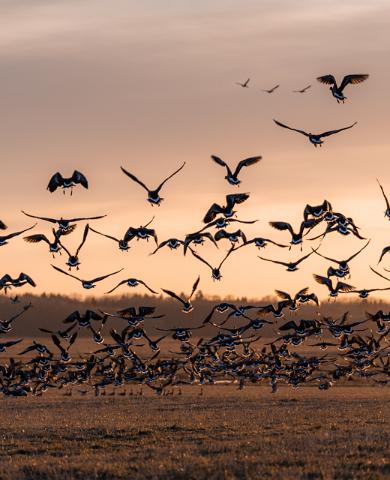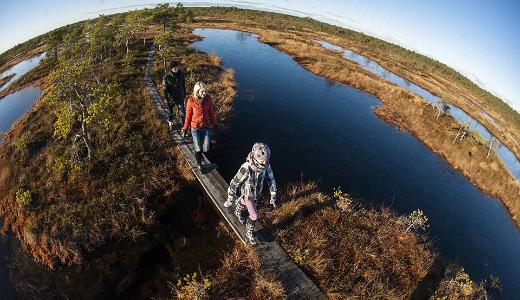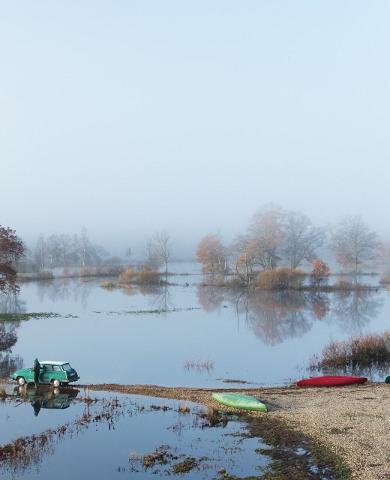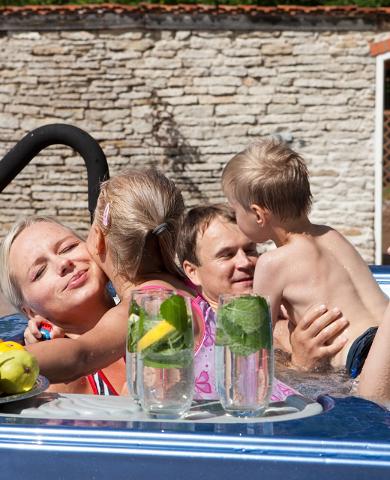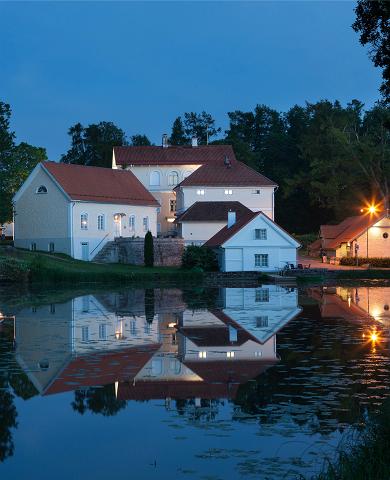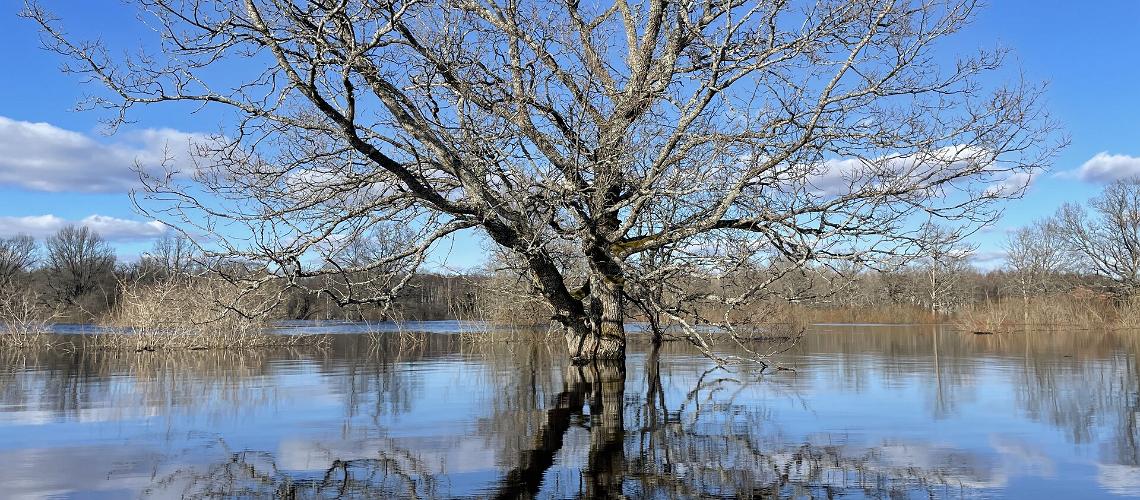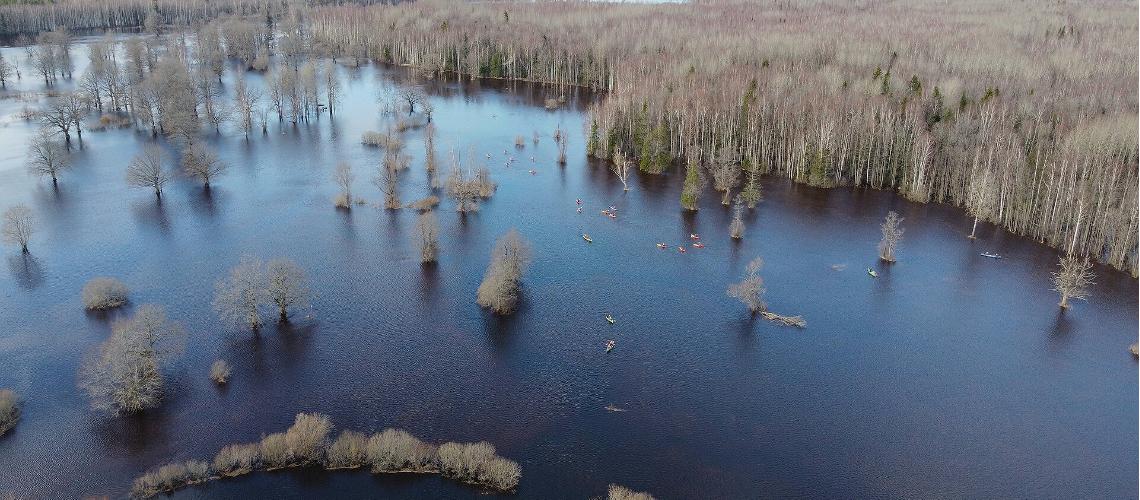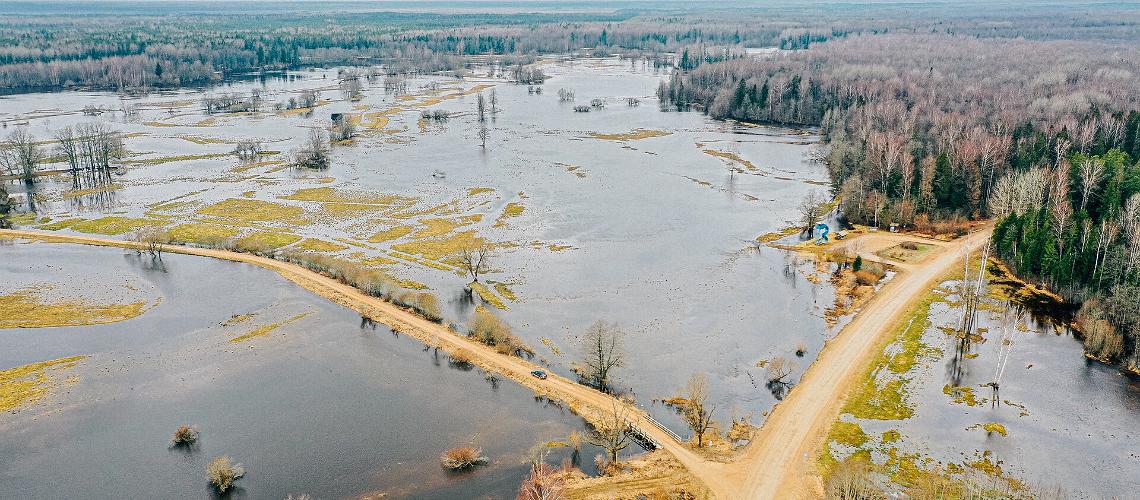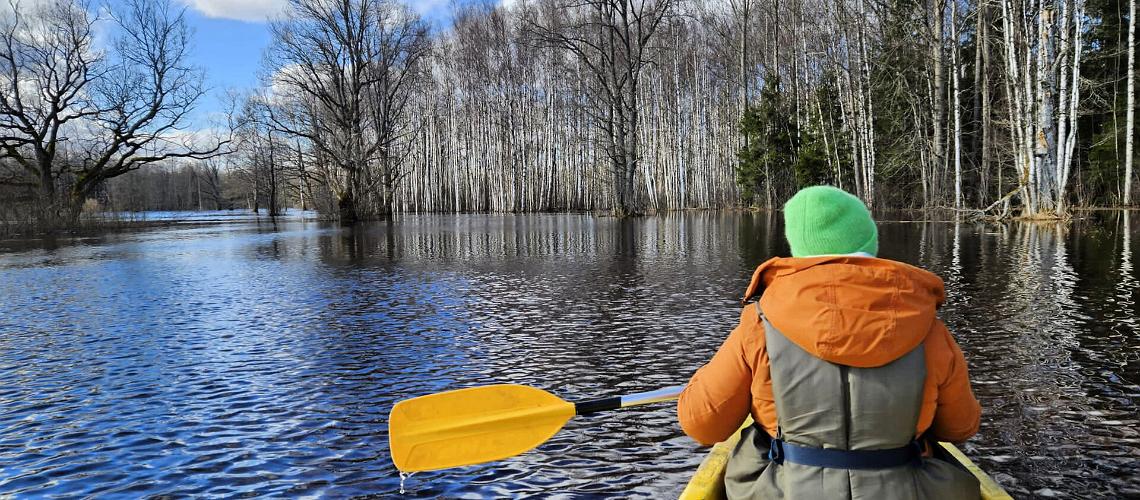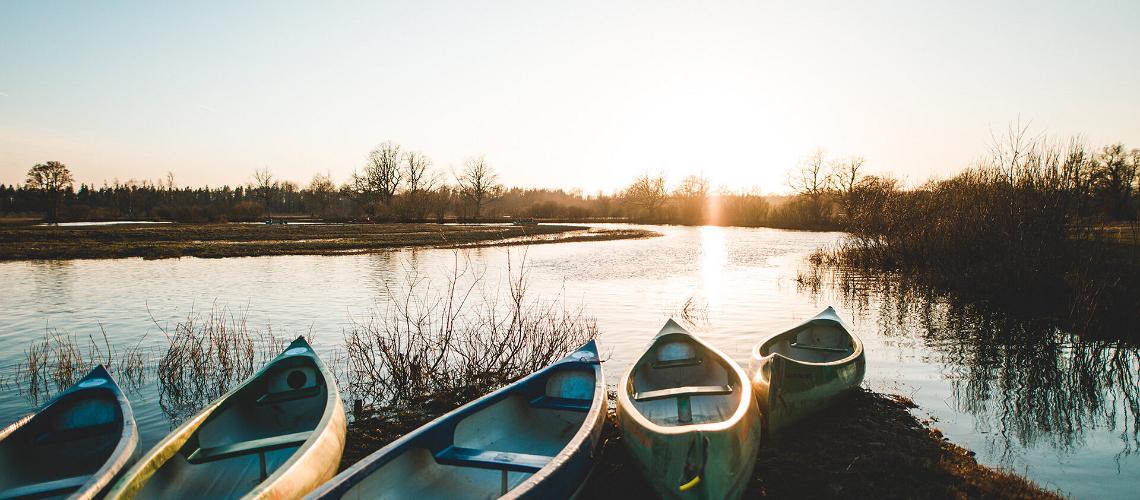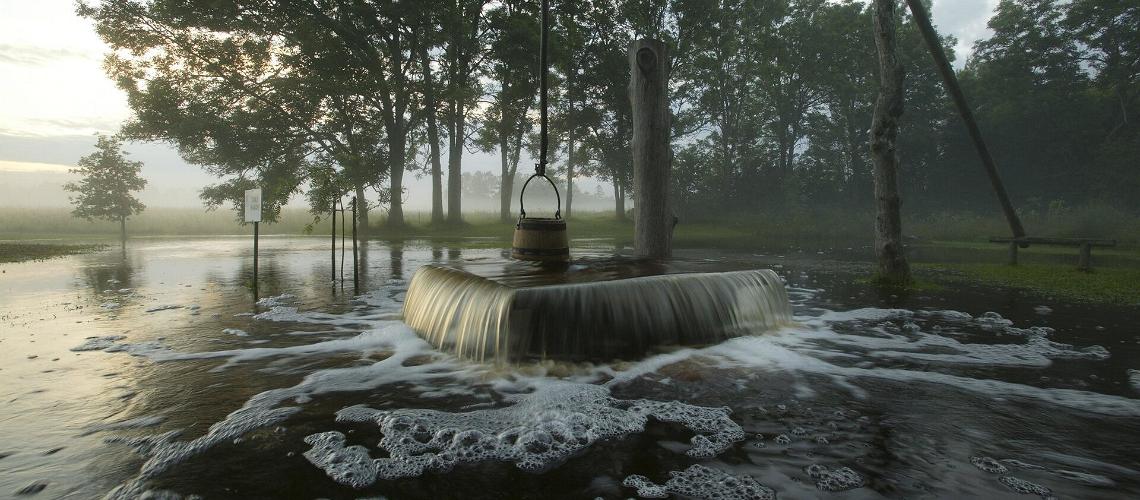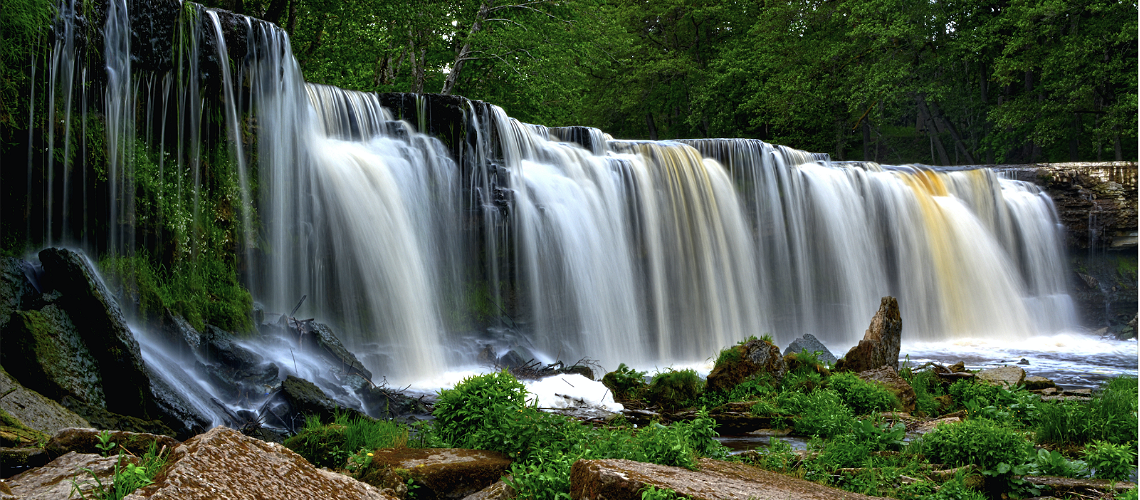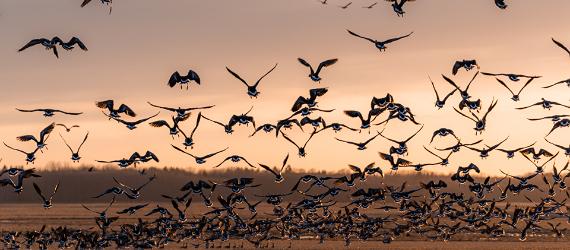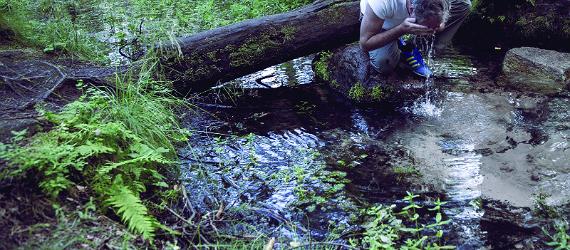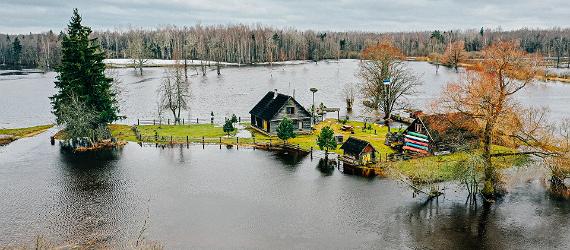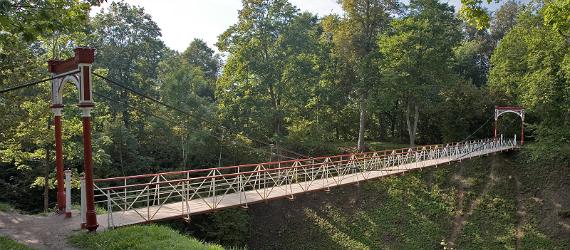Sometime around the end of March or early April, the spring thaw brings massive flooding to Soomaa National Park. The park's four rivers overflow their banks, submerging the surrounding meadows and forests. The landscape is transformed into a giant, shallow lake before the water soaks back into the ground and the rivers return to their original routes.
Rivers cannot cope with the melting snow, causing a spectacular annual flood, rending up to 17,500 hectares of roads, lower forests, and meadows only navigable by water. The maximum change in water levels has been measured at 5.5 meters, and the last extensive flooding occurred in the spring of 2011. While the level changes every year, the floods are so reliable they've been marked as a "fifth" season.
Visiting Soomaa National Park during the fifth season is an adventure that is both surprisingly easy and incredibly challenging.
It's easy because it's possible to make the trip in a day from Tallinn if you have a car to get to the park. You can drive down, rent a canoe for two hours, and drive back to Tallinn. However, it's challenging because you have to be flexible. There is no way to know exactly when the waters will be highest more than a week or two in advance. Plus, spring weather in Estonia is notoriously fickle. You may have a sunny day or snow and freezing temperatures. You may have both on the same day! Luckily, the park is beautiful in any weather, but you must be prepared with the proper clothing.
How to experience the fifth season sustainably
If you visit Soomaa National Park during the fifth season, consider making your trip as sustainable as possible. Here are a few suggestions.
- Take public transport. This may be easier said than done, but it's not impossible. Pärnu or Viljandi can be used as a base for visiting the park. Pärnu is easily reached by bus from Tallinn, while Viljandi can be reached by train. Then you need to either arrange transport into the park with your outfitter or take a local bus to Soomaa, though schedules are limited. Car rentals in Pärnu and Viljandi are also options.
- Consider staying in or near the park for a night. After Soomaa became a national park, new structures could only be built on existing foundations, so there are few accommodation options within the park's boundaries. However, you can find additional options in the villages outside the park. If you've made the effort to get to the park, then why not immerse yourself in the local environment? Staying near Soomaa supports the local rural economy, as you can go for meals at the local cafe in Jõesuu or get groceries in Tori.
- Learn about the ecology of the region. Today Soomaa is synonymous with wild nature, but humans have lived in and altered the nature of Soomaa for centuries. Grazing livestock limited tree growth in the meadows. Inhabitants built haabjas (dugout canoes) to get around during the floods. The Second World War and the subsequent Soviet occupation changed the area — thousands of rural residents were deported to Siberia while others were forced into a collective farming system. To learn more about the region's history, visit the Soomaa Visitor Center or hire a local guide. You can also organize a visit to the workshop where Aivar Ruukel still makes haabjas according to traditions passed down over decades.
- Support sustainable service providers. Matsalu, Soomaa, and Lahemaa National Parks have been recognized as sustainable European tourism destinations. The EUROPARC Federation awards a five-year Charter for Sustainable Tourism to protected areas, entrepreneurs operating in a certified protected area, and tour operators who offer services following the principles of nature preservation. Five tourism service providers in the Soomaa area obtained the certification in July 2022: Matka-Rebane, Piesta Kuusikaru Farm, Tipu Nature School, Soomaa Holiday Village, and Soomaa.com
Can't make it to Soomaa National Park?
The effects of the spring thaw can be seen all over Estonia. If you can't make it to Soomaa National Park for the fifth season, you still have a few options to experience high water levels.
One such natural spectacle is the Tuhala Witch's Well. As the water levels rise in spring, this well is known to overflow at a speed of 100 liters per second. This creates an effect considered one of Europe's most unique natural phenomena. It's not an easy experience to plan for, though, as it can last anywhere from one day to three weeks — it all depends on Mother Nature!
Winter waterfalls are known for their stunning ice formations, but springtime is one of the best times of the year to visit Estonian waterfalls. The spring thaw means the water tumbling over rocks and plunging over the fall increases, making a visit more impressive.
- The highest waterfall in Estonia is Valaste Waterfall along the limestone cliffs of the northern coast. The falls are over 30 meters high. A wooden staircase lets visitors observe the waterfall along its entire length.
- Jägala Waterfall is Estonia's widest waterfall and most popular, thanks to its proximity to Tallinn and Lahemaa National Park. It is over 50 meters wide, and visitors can get close to the spray.
- Keila Waterfall is the third-largest waterfall in Estonia. Nearby, you'll find hiking trails and the boutique hotel Schloss Fall at the restored Keila-Joa Manor.
- Narva cascades are located on the territory of the now-defunct Kreenholm Textile Factory. When water levels are high in the spring, the hydroelectric plant releases water that tumbles over the cascades.
Springtime's high water levels make river rafting and canoeing especially exciting. In deep Southeast Estonia, near Setomaa, you can go rafting on the Piusa or Võhandu (site of the famous Võhandu Marathon) Rivers. You can also paddle by impressive limestone bluffs along the Peetri River during a highwater canoe trip.




